31 March 2025
Published on 2025-03-31
You can now use Ablestar Bulk Product Editor to bulk edit products based on their profit margin. All you need to do is use the 'Profit Margin' filter to select the variants that you need:
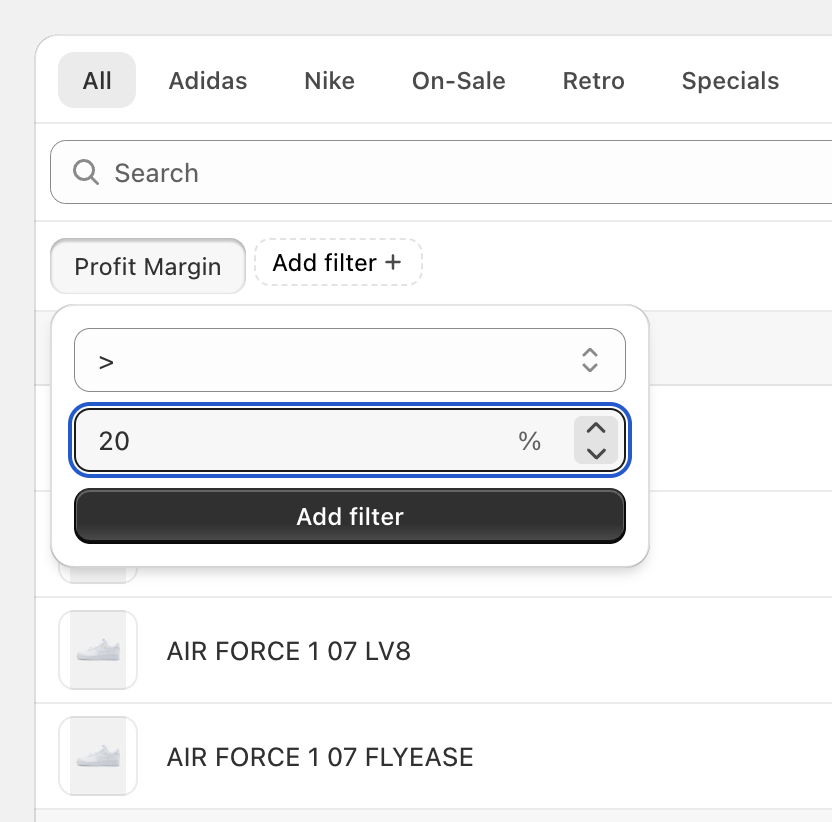
If the cost of a variant is blank it will not have a profit margin but you can also select those variants by searching for products where the profit margin 'is empty/blank'.
Learn more about searching for products to bulk edit.
28 March 2025
Published on 2025-03-28
We've added a 'Bulk edit' action to the Shopify admin products page to allow you to quick bulk edit a series of products:
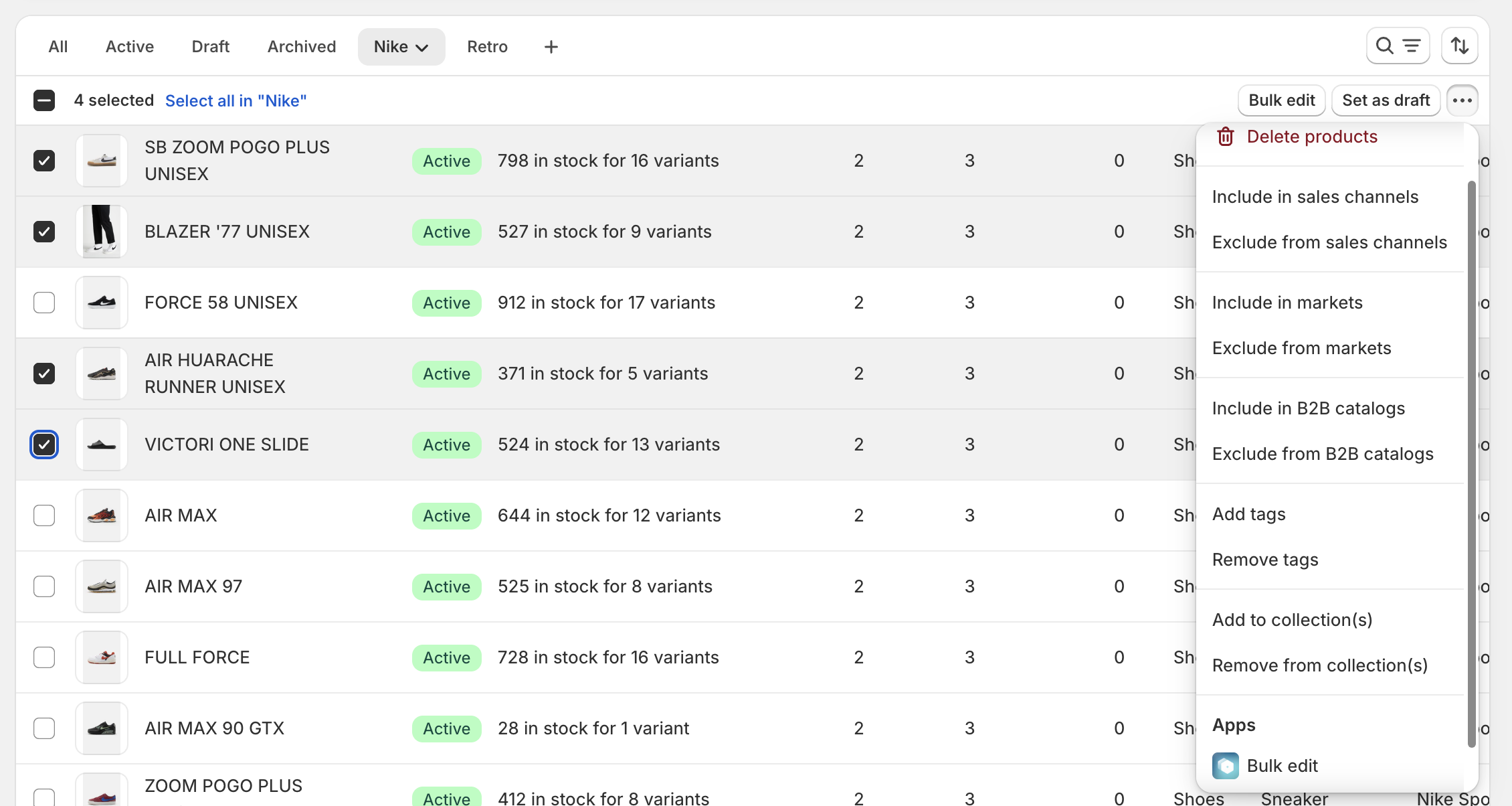
This is in addition to our other integrations with the Shopify admin that allow you view a product's price history and edit history.
You may also notice some minor changes to how products are listed in the app. We've increased the page size to 50 products and updated the ordering of the products so it matches the default view in the Shopify admin.
24 March 2025
Published on 2025-03-24
We've updated Ablestar Bulk Product Editor to support upcoming changes to Shopify Markets. Soon, Shopify will be releasing a new version of Shopify Markets which expands support for custom price lists to shoppers from particular B2B or POS locations.
When those changes are rolled out you'll continue to be able to bulk edit prices for the new markets in the same way you do today. The only change you should notice is that now instead of just updating a 'Shopify Market', now you'll be updating a 'Shopify Market Catalog'. Existing catalogs should have the same name as the catalog's market. We've made this change because going forwards a single Shopify market can have multiple catalogs.
Learn more about using Shopify Markets with Ablestar.
19 March 2025
Published on 2025-03-19
We've made improvements to the page that shows you the status of a site scan for broken links. Now, while the scan is running, you are able to see the current page being scanned and any broken links found so far. No more waiting for the scan to complete.
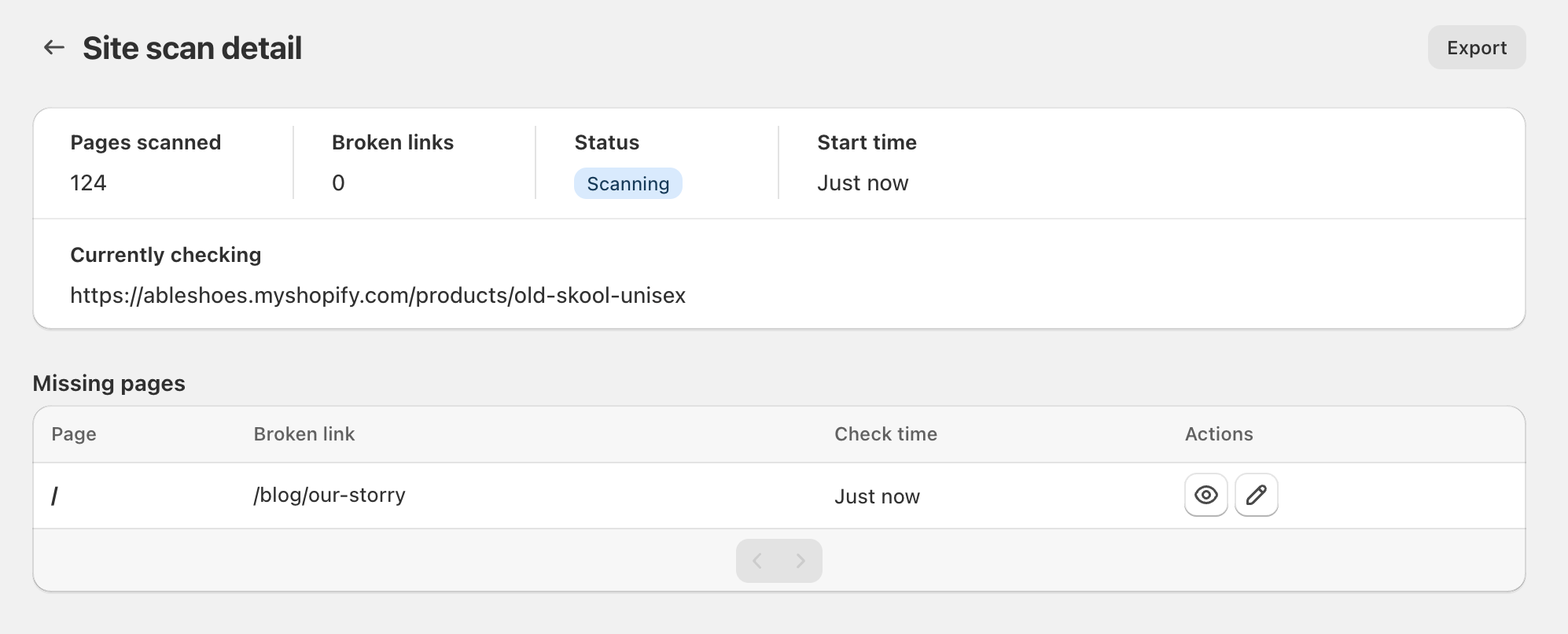
Learn more about scanning your Shopify store for broken links.
17 March 2025
Published on 2025-03-17
It's now possible to change the time of a scheduled edit without having to clone the edit first. You can modify the start time of a scheduled edit anytime until it starts. After an edit runs you can still schedule an undo, even if you didn't schedule one when creating the edit.
To edit the start or undo time go to the edit's detail page and either: - Click on the pencil icon next to the scheduled time - Select 'More actions → Edit schedule' from the top menu
This should make the process of managing sales easier and remove the need to clone edits when you want to modify an edit's schedule.
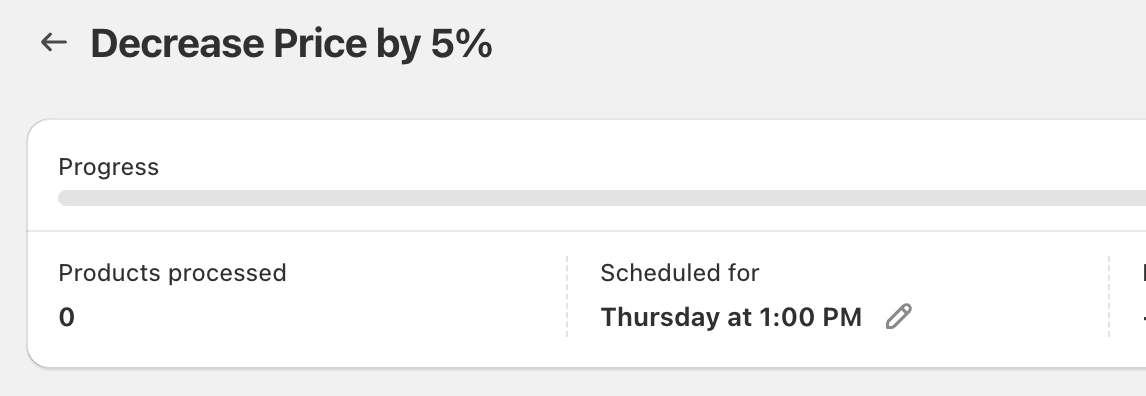
Learn more about scheduling edits.
14 March 2025
Published on 2025-03-14
We've improved the collection search for products in Ablestar Bulk Product Editor. Now collections are matched by ID and include an icon next to them to identify if they are a smart collection (star icon) or a manual collection (tag icon). This should make it more easy to distinguish between collections with similar names.
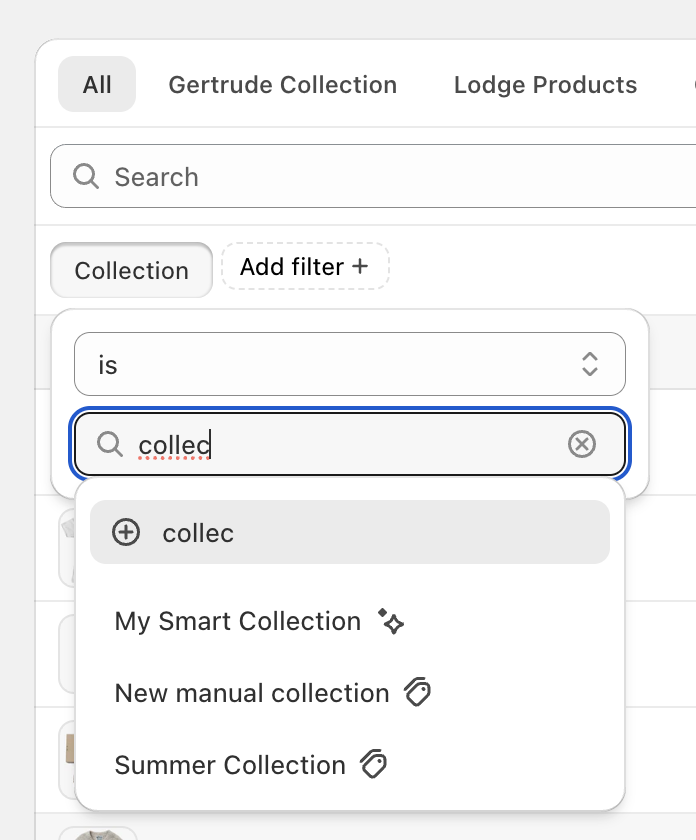
Learn more about searching for products to bulk edit.
Published on 2025-03-06
On March 8, starting at 05:30 UTC, we will be performing database maintenance which will result in the Shopify apps being briefly unavailable. Scheduled tasks will run automatically once the maintenance completes but bulk edits running during that time may be interrupted and need to be restarted. We are trying our best to schedule the maintenance during periods of low usage, if you have any questions please reach out.
3 March 2025
Published on 2025-03-03
The next time you log into Ablestar WooCommerce Importer you may notice that Shopify prompts you to accept updated permissions for the app. These updates are necessary in order for the app to stay compatible with the latest versions of the Shopify API. Specifically, the permissions allow the app to continue to see the locations on your store and to publish uploaded products to your online store (if the products are active).
If you are unable to upgrade the permissions yourself you may need to ask the owner of the Shopify store to open up the app and accept the new permissions.
14 February 2025
Published on 2025-02-14
We've upgraded the Shopify APIs that are used to bulk edit product categories. For the most part these changes should be transparent however there are a few things to note:
- The 'Product category' field is now renamed to 'Category' to stay consistent with how Shopify calls it
- Recurring edits, code snippets, and product rules that are configured to use the old category IDs should continue to work
- Code snippets now have access to a
taxonomy_categoryfield where you can see the category in Shopify's product taxonomy format.
Learn more about editing product categories.
13 February 2025
Published on 2025-02-13
We've made a large update to how we handle product images across our apps. While you shouldn't notice any immediate changes, this paves the way for supporting additional types of product media like external videos and 3d models. If you do encounter any issues product images not updating in our apps please let us know and we'll get them fixed right away.
If you are using Ablestar Bulk Product Editor you may need to update the app's permissions for edits to work. You can do this by going to the Settings section of the app. If you see a yellow banner prompting you to update the permissions follow those steps.
6 February 2025
Published on 2025-02-06
We've made two improvements to importing products with Ablestar Bulk Product Editor:
- When you configure the fields to map into Shopify we now display the column letter on the left. This can help when mapping files with a large amount of columns
- When the app encounters an error creating a product on Shopify (for example if you're trying to set a numeric metafield to a value like "shoes") the app will display that error message immediately and the row number from your file.
Together these should make it easier to configure and import product data. Learn more about creating products in Shopify.
5 February 2025
Published on 2025-02-05
Because of changes to Shopify's API, it is no longer possible to directly edit the Fulfillment Service field for product variants. Originally, variants could only be stocked with a single fulfillment service, and you could bulk edit that field through the app.
With changes starting in 2022, variants can now be stocked at multiple fulfillment services. As a result, the upcoming version of the Shopify API has removed the ability to modify the Fulfillment Service field.
As a replacement, you can connect or disconnect the variants from specific locations managed by different fulfillment services.
Learn more about connecting and disconnecting inventory locations.
28 January 2025
Published on 2025-01-28
We've improved the edit logs when running an inventory level edit. Now, the location of the inventory will be shown to the right of the 'Inventory Level' label. This will make it easier to see what data has been changed, especially if the edit is updating multiple inventory levels at once.
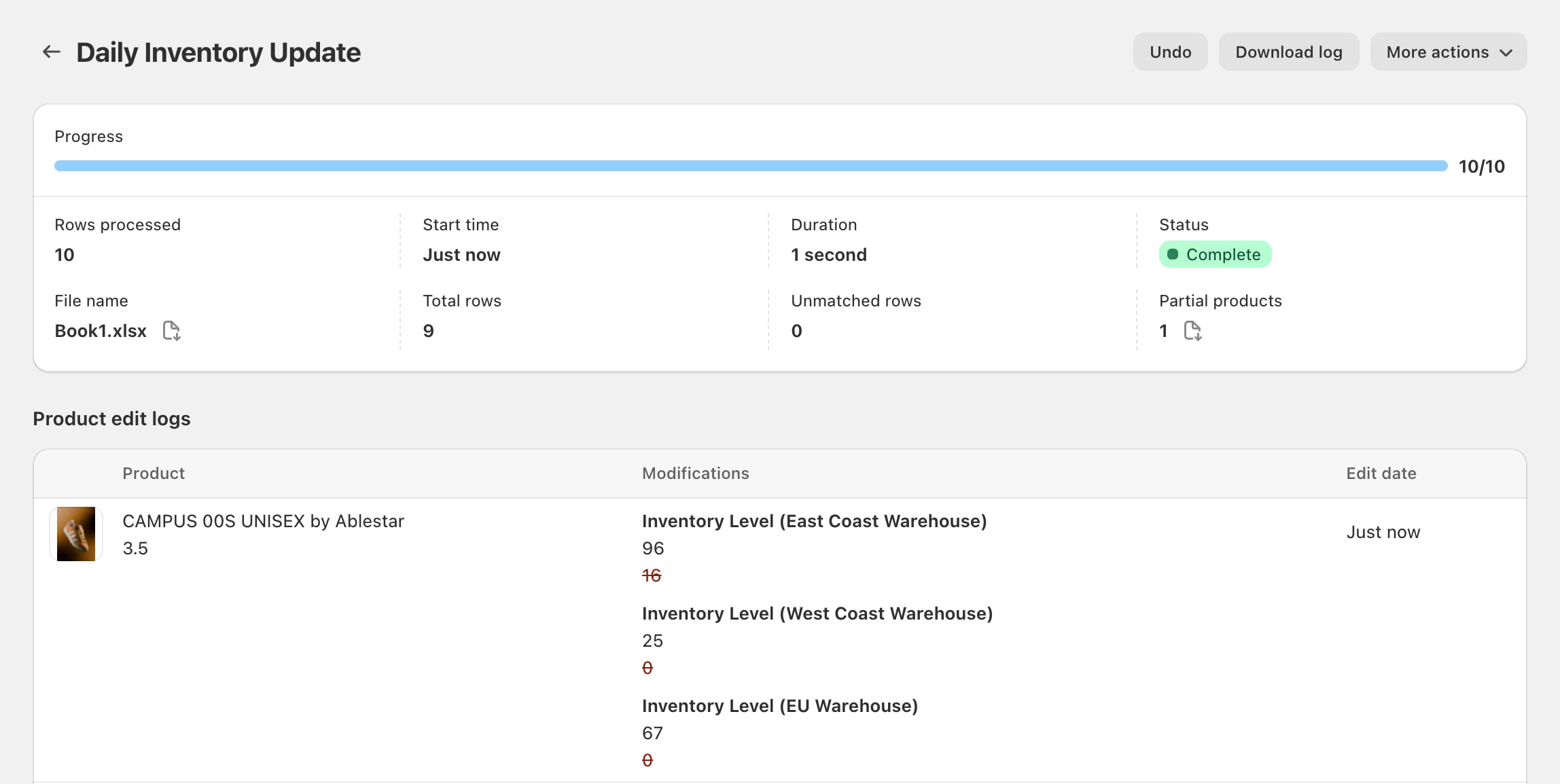
Learn more about editing inventory levels.
28 January 2025
Published on 2025-01-28
We've added a 'Download log' button on the price history page which allows you to download a CSV file of the product's price history:
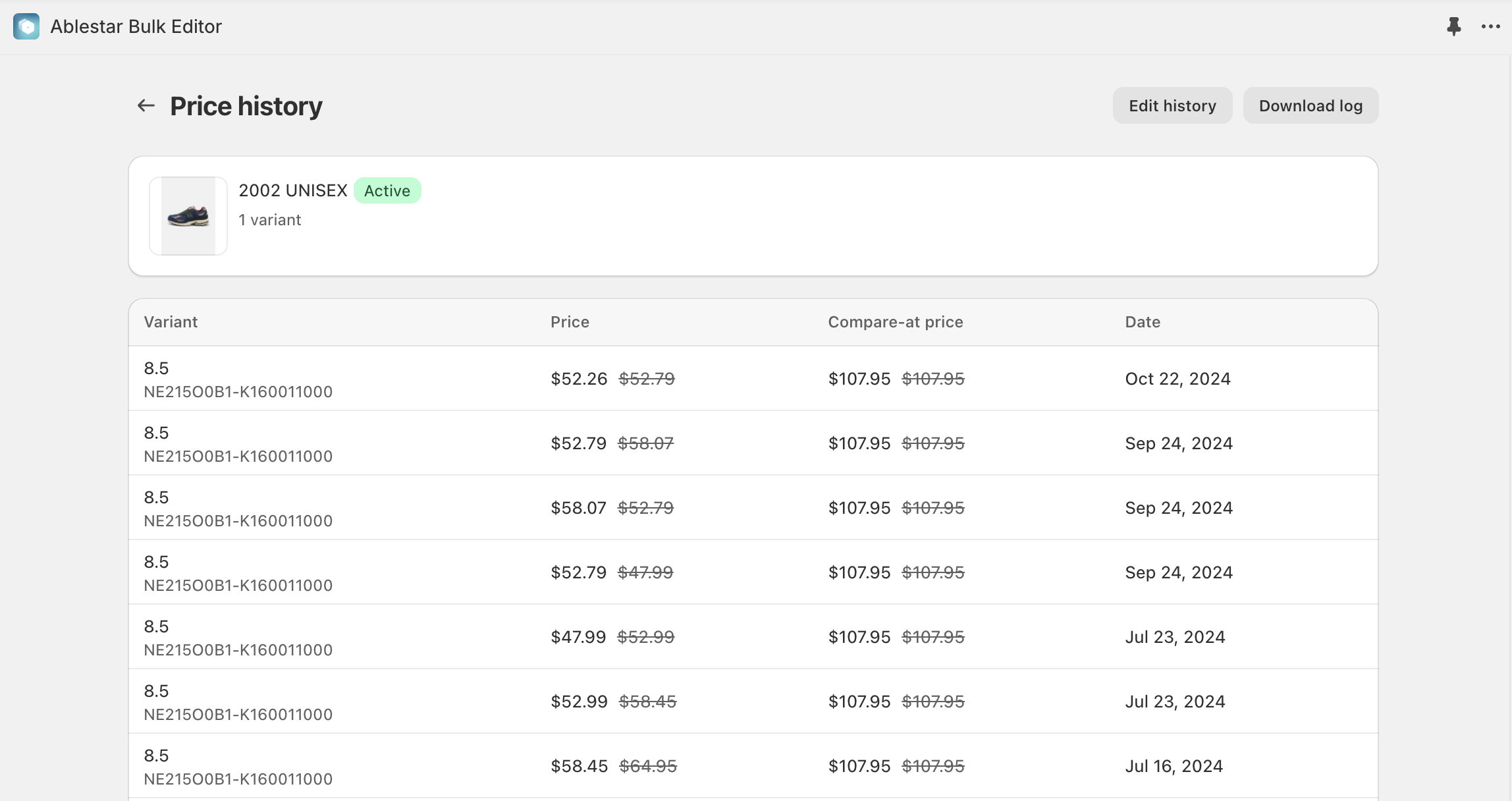
As a reminder, the price history page will show you all price changes that have occured while the app is active, not just changes that occured in the app. You can access the price history page by:
- Navigating to the product or variant in the Shopify admin
- Clicking on the More actions button at the top of the page and selecting Price history
Learn more about viewing a product's price history in Shopify.
24 January 2025
Published on 2025-01-24
You can use product rules to automatically enforce actions on your products—such as archiving any items that are out of stock. However, because of this flexibility, it's also possible to create rules that loop, continuously toggling a product between two states. To prevent these loops, Ablestar Bulk Product Editor automatically pauses any rule that runs too frequently on a single product.
We've made it easier to identify which product triggered a pause. When you view the details of a product rule, you’ll see a link to the affected product and its edit logs. Reviewing these logs can help you determine what caused the product to be edited too many times.
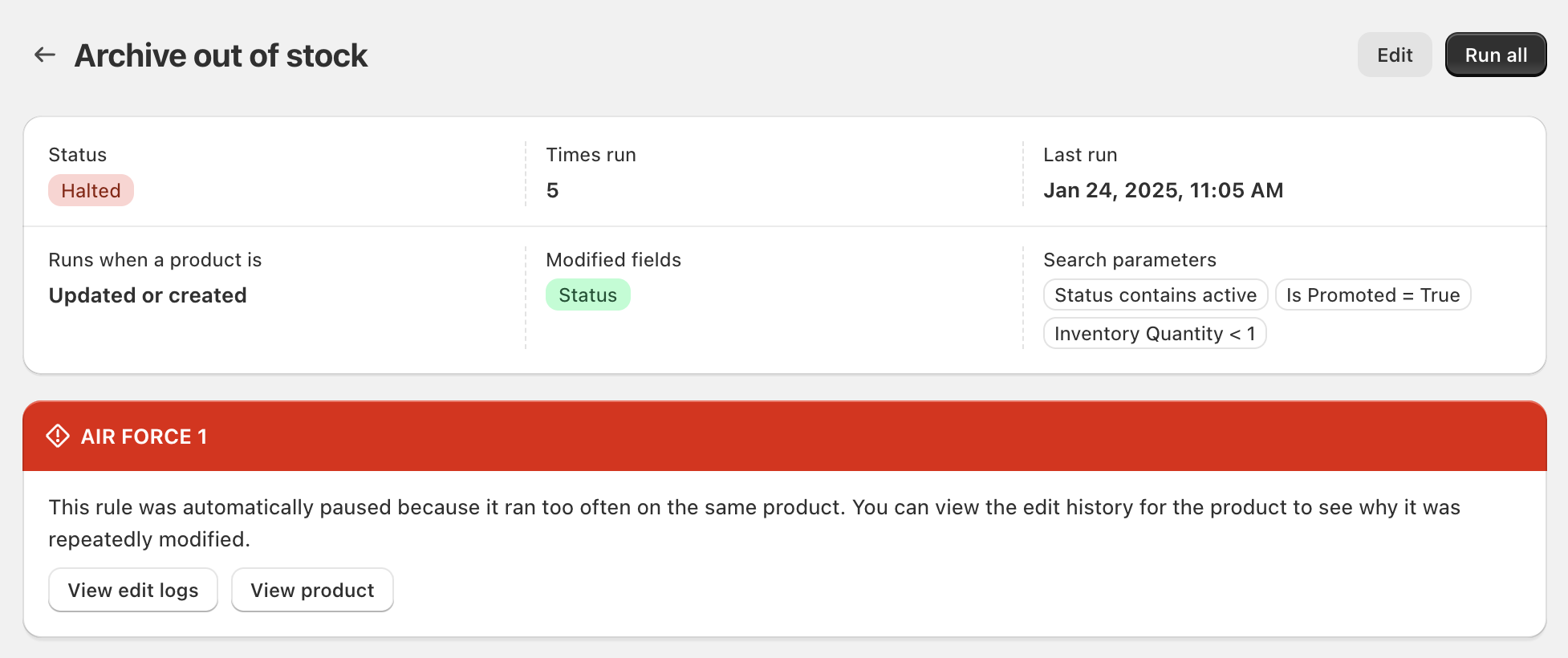
Learn more about product rules.
23 January 2025
Published on 2025-01-23
We've updated Ablestar Bulk Product Editor to make it easier to bulk edit an arbitrary list of products. Now, if you select Specific products under the '+ Add filter' dropdown, you'll see a popup window where you can quickly select multiple products by title:
This should speed up the process to select specific products when they aren't easily identifiable by other fields.
Learn more about searching for products to bulk edit.
23 January 2025
Published on 2025-01-23
When you run a spreadsheet edit in Ablestar Bulk Product Editor you have the option to limit the spreadsheet to a specific vendor. When you select the vendor the app will analyze the file to see how many products match each row.
Previously, this analysis could take several minutes, especially on stores with a large amount of products. We've made some changes that should significantly improve the speed of this analysis, allowing you to set up your edits even faster.
14 January 2025
Published on 2025-01-14
We will be sunsetting our Ablestar Automatic Order Tags app on February 13, 2025.
When we launched the app in 2021 we felt there was significant room to improve order tagging automation. However, since then Shopify has invested significantly in Shopify Flow and made it available for all Shopify stores. Much of the functionality provided by our app is now available in Shopify Flow for free and we think this is a better solution for store automation.
After February 13, Ablestar Automatic Order Tags will no longer be available and any tagging workflows you currently use will no longer function. We strongly encourage you to uninstall the app and migrate your automated tagging processes before this date to avoid any disruption.
As of today we have also cancelled all recurring subscription charges for the app. You will still be able to access the app until the sunset date, but new charges should not appear on your Shopify invoice after today.
If your store still relies on Ablestar Automatic Order Tags, we recommend Shopify Flow or exploring alternative tagging solutions in the Shopify App Store that meet your specific needs. Please reach out to us if you have any questions or require assistance with this transition.
We appreciate your trust in using Ablestar Automatic Order Tags and your understanding during this sunset period.
9 January 2025
Published on 2025-01-09
You can now connect products to multiple locations in a single modification. Previously, if you wanted to connect products to multiple locations in a single edit you would have had to click on '+ Add modification' to include each new location. Now you can do this simply by selecting mutliple locations from the dropdown. The same process applies for disconnecting inventory from locations.
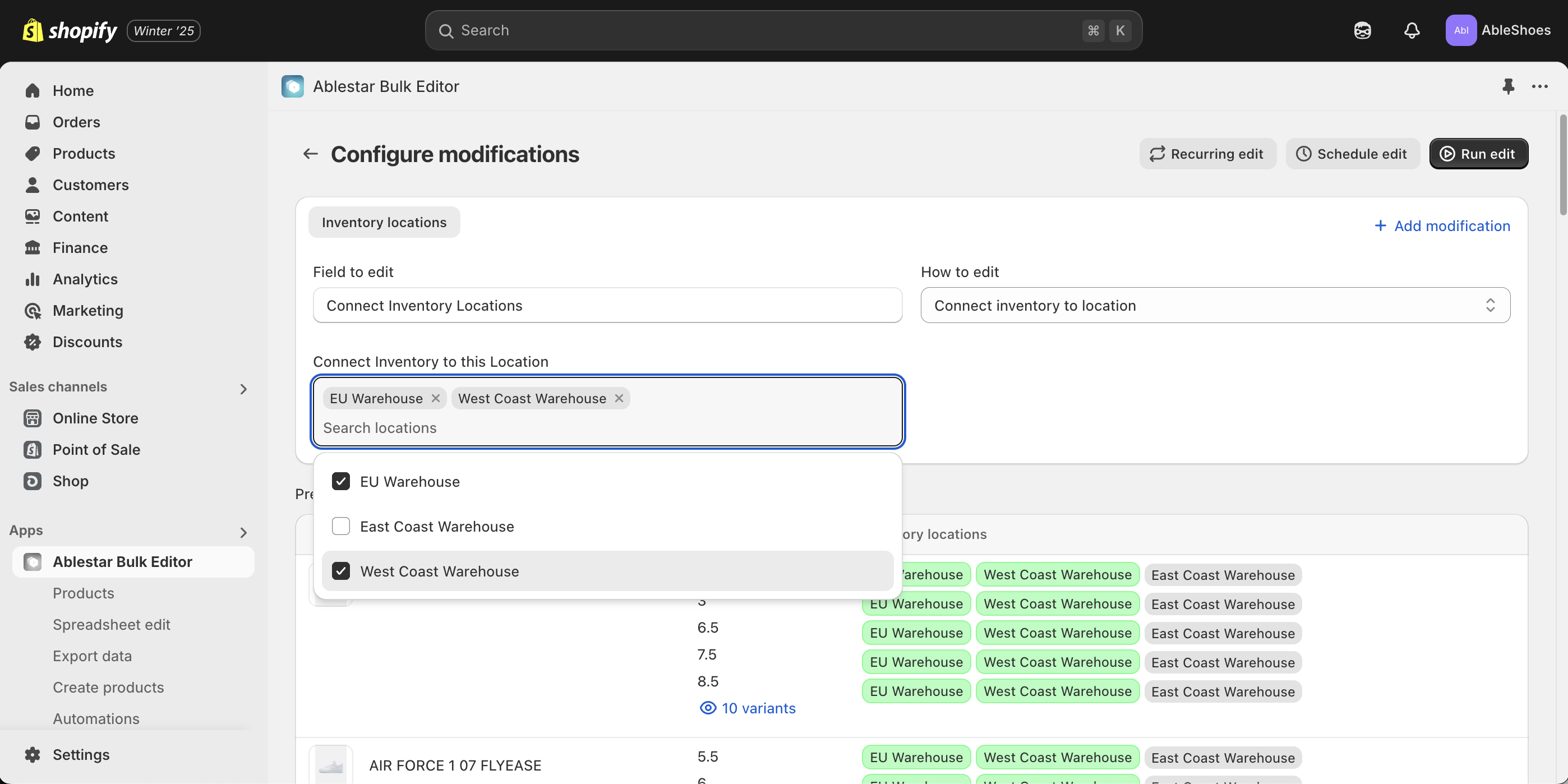
Learn more about connecting inventory to locations in Shopify.
7 January 2025
Published on 2025-01-07
We're very happy to announce that now the Ablestar WooCommerce Importer is now 'Built for Shopify'. According to Shopify, the "Built for Shopify status is the highest level of recognition and achievement that an app can reach" and requires the app to meet specific design and performance standards. With this milestone you can be sure that the app has very low impact on your store's speed and will function well within the Shopify admin.
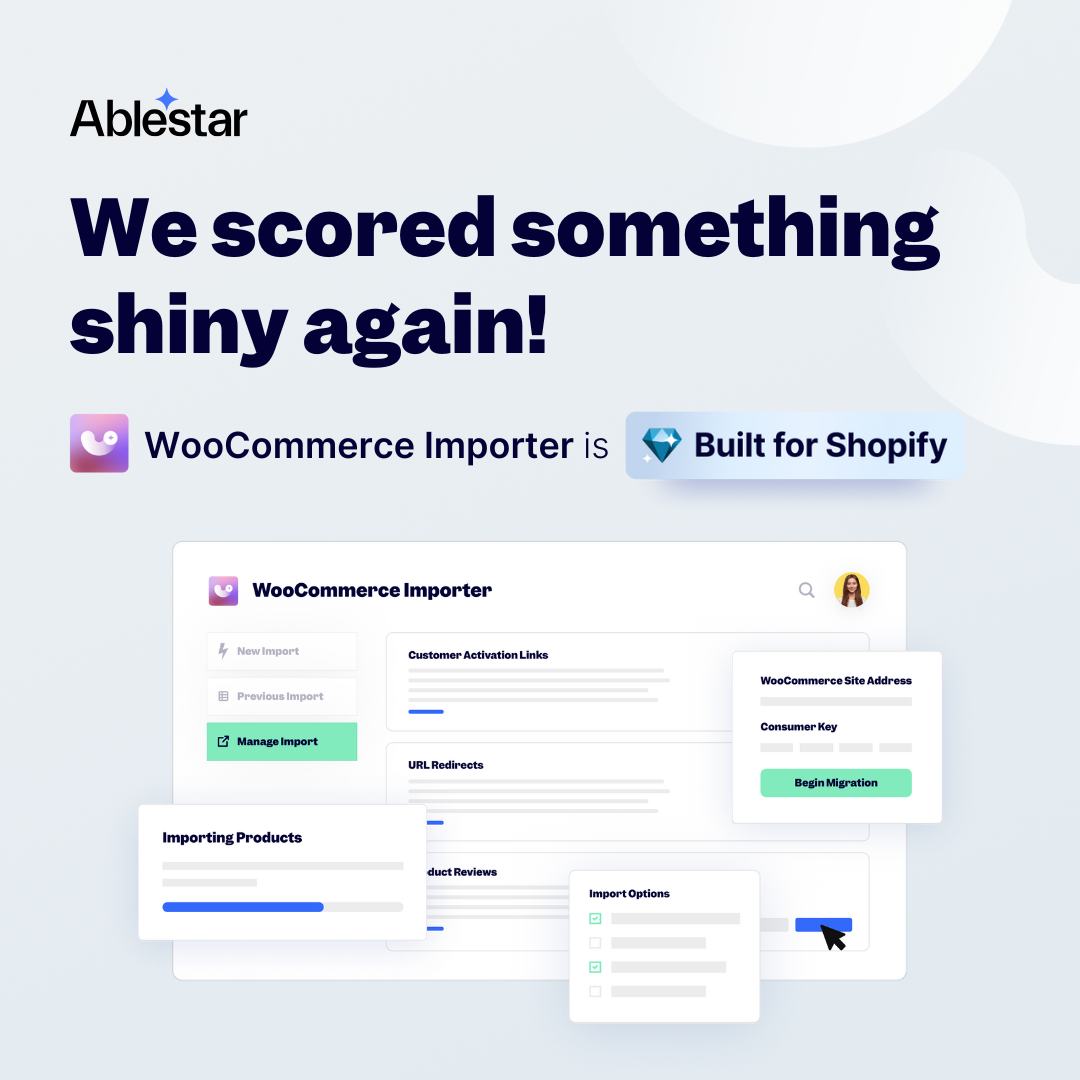
Learn more about Ablestar WooCommerce Importer on the Shopify App Store.


